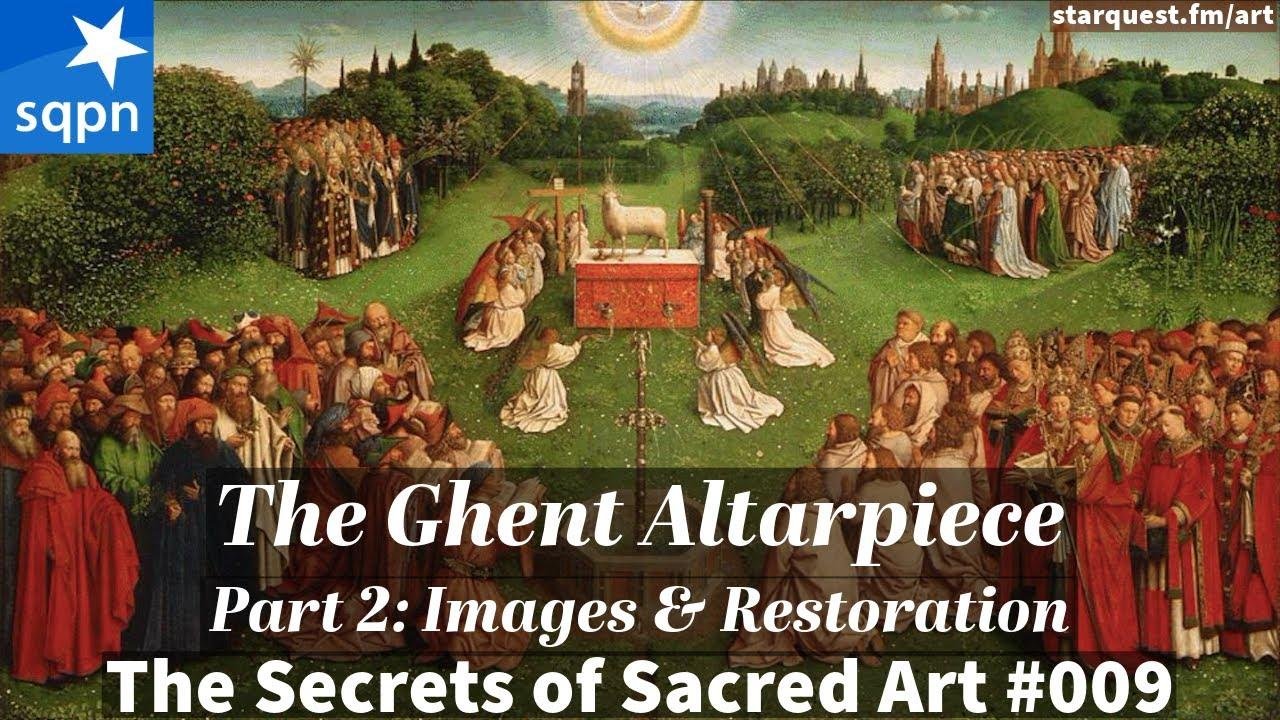The Ghent Altarpiece is a masterpiece full of mystery and beauty. From the intricate details to the clever symbolism, it's no wonder why it's considered one of the greatest works of sacred art. The restoration process and the hidden meanings behind the images make it a must-see for art enthusiasts. It's like a movie full of controversy and intrigue, a real treasure worth exploring.🎨
🎨 The History and Restoration of the Ghent Altarpiece
Table of Contents
The Ghent Altarpiece is a piece of sacred art that holds deep meaning and religious significance. In the second part of this series, we explore the images and restoration of this remarkable piece. Listen to the full episode on the Mysteries of the Holy Rosary on Apple Podcast or visit us on StarQuest media to take a deep dive into this extraordinary piece.
Here is a summary of the episode and the history behind the Ghent Altarpiece.
This remarkable piece of art was created by the Van Eyck brothers, Hubert and Yan, in the 15th century. The work, also known as the Mystic Lamb, is considered one of the greatest works of its time. It is located in the Cathedral of St. Bavo in Ghent, Belgium, and is a testament to the incredible craftsmanship of the artists.
Unfortunately, the altarpiece has faced significant restoration challenges over the years. The piece has been dismantled and parts of it have been lost, leading to complex restoration efforts to preserve its beauty and historical significance.
🎨 The Restoration Process and Secrets Revealed
The restoration of the Ghent Altarpiece has revealed a treasure trove of secrets about its history and significance. The piece has survived dismantling and multiple attempts at preservation, and it continues to be a testament to the enduring power of sacred art.
The altarpiece is a sight to behold, standing at 20ft tall and attracting millions of visitors annually. The restoration process has brought it back to its full glory, allowing visitors to appreciate its beauty and symbolism.
🎨 Unveiling the Meaning Behind the Images
The images on the Ghent Altarpiece hold deep significance and have captured the imagination of art enthusiasts for centuries. The careful restoration process has unveiled the intricate details and symbolic meanings behind each image, providing a deeper understanding of the artistry and spiritual significance of the altarpiece.
The altarpiece contains depictions of various religious figures, including the Mystical Lamb, St. John the Baptist, and the Virgin Mary. Each image is rich in meaning and serves as a powerful representation of the Christian faith.
🎨 Unraveling the Mysteries of Sacred Art
The restoration of the Ghent Altarpiece has shed light on the mysteries and symbolism behind sacred art. The altarpiece's images and restoration process are a testament to the enduring power of art and its ability to convey profound religious and spiritual messages.
The careful restoration efforts have allowed visitors to appreciate the intricate details and hidden meanings within the altarpiece, creating a deeper connection to its historical and religious significance.
Key Takeaways:
- The Ghent Altarpiece, also known as the Mystic Lamb, is a remarkable piece of sacred art created by the Van Eyck brothers in the 15th century.
- The restoration process of the altarpiece has revealed its intricate details and symbolic meanings, providing a deeper understanding of its religious significance.
- The images and restoration of the altarpiece are a testament to the enduring power of sacred art and its ability to convey profound spiritual messages.
By discussing and exploring the images and restoration process of the Ghent Altarpiece, we gain a deeper appreciation for the enduring power and significance of sacred art. The careful preservation and restoration of these masterpieces allow us to connect with their historical and religious value, providing a glimpse into their enduring significance.



![🇪🇸 [Torchlight Brigade] Themed Week Unboxing Event](https://gamedeck.in/wp-content/uploads/2024/03/WP-20240307153358-974698-768x432.jpg)


